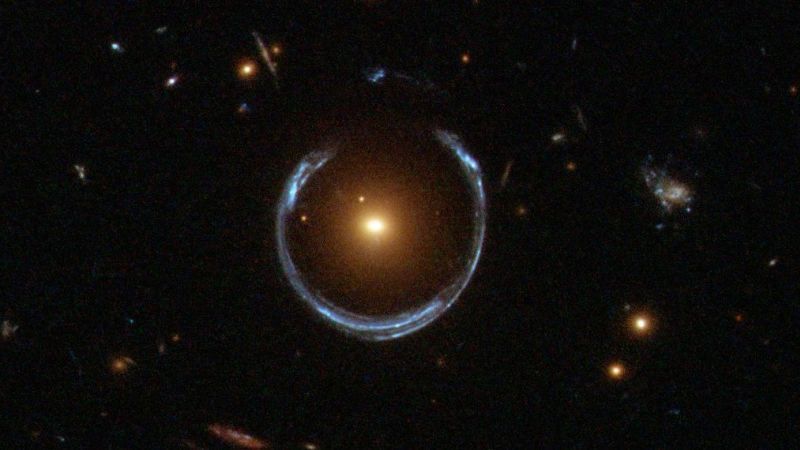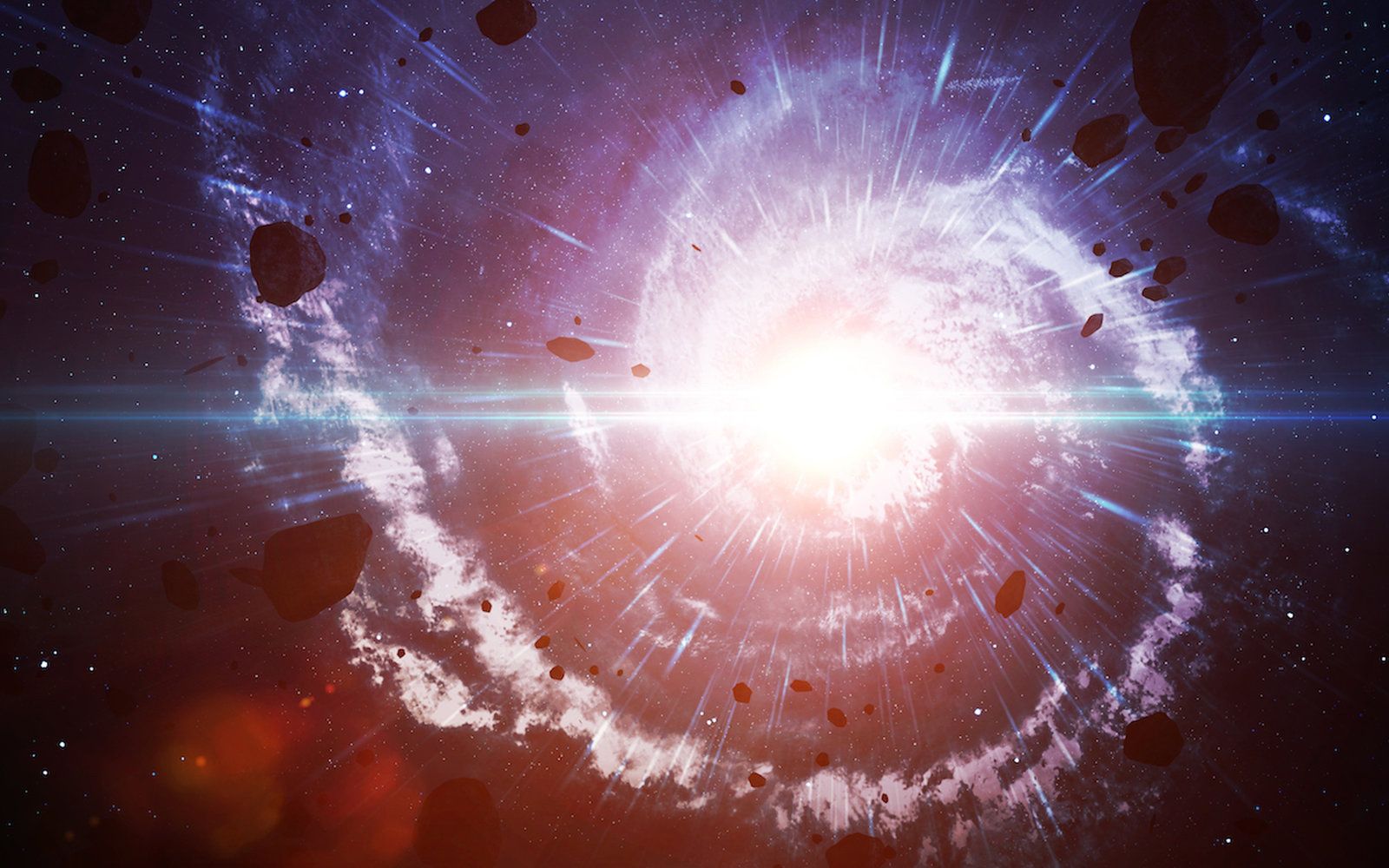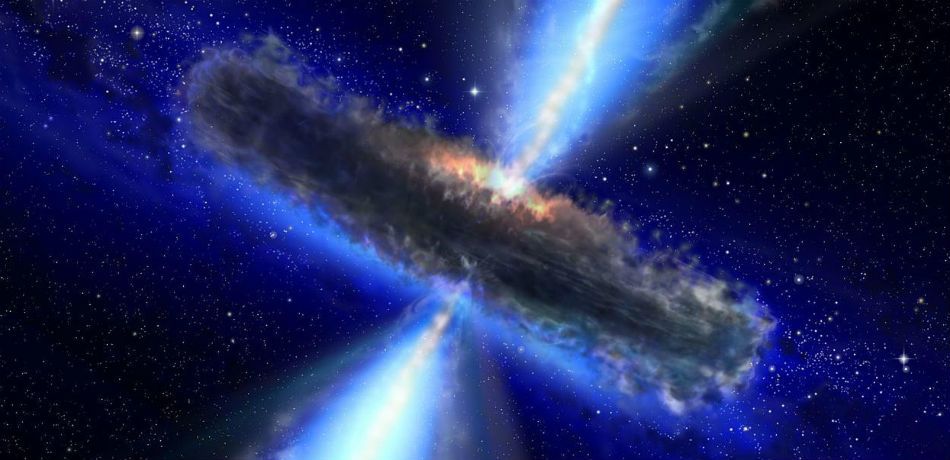Archive for the ‘cosmology’ category: Page 356
Mar 6, 2018
Bioquark Inc. — Creative Futurism — Ira Pastor
Posted by Ira S. Pastor in categories: aging, bioengineering, biotech/medical, cosmology, cryonics, DNA, futurism, health, military, science
Mar 6, 2018
Physicists Find a Way to See the ‘Grin’ of Quantum Gravity
Posted by Genevieve Klien in categories: cosmology, particle physics, quantum physics
In 1935, when both quantum mechanics and Albert Einstein’s general theory of relativity were young, a little-known Soviet physicist named Matvei Bronstein, just 28 himself, made the first detailed study of the problem of reconciling the two in a quantum theory of gravity. This “possible theory of the world as a whole,” as Bronstein called it, would supplant Einstein’s classical description of gravity, which casts it as curves in the space-time continuum, and rewrite it in the same quantum language as the rest of physics.
Bronstein figured out how to describe gravity in terms of quantized particles, now called gravitons, but only when the force of gravity is weak — that is (in general relativity), when the space-time fabric is so weakly curved that it can be approximated as flat. When gravity is strong, “the situation is quite different,” he wrote. “Without a deep revision of classical notions, it seems hardly possible to extend the quantum theory of gravity also to this domain.”
His words were prophetic. Eighty-three years later, physicists are still trying to understand how space-time curvature emerges on macroscopic scales from a more fundamental, presumably quantum picture of gravity; it’s arguably the deepest question in physics. Perhaps, given the chance, the whip-smart Bronstein might have helped to speed things along. Aside from quantum gravity, he contributed to astrophysics and cosmology, semiconductor theory, and quantum electrodynamics, and he also wrote several science books for children, before being caught up in Stalin’s Great Purge and executed in 1938, at the age of 31.
Continue reading “Physicists Find a Way to See the ‘Grin’ of Quantum Gravity” »
Mar 6, 2018
A “Living Dead” Star that Could Shed Light on the Early Universe
Posted by Genevieve Klien in category: cosmology
IT’S BREAKING ALL THE RULES. Ordinarily, a supernova marks the death of a mammoth star, which then briefly outshines an entire galaxy before fading away. Not so for a baffling supernova that went off in a nearby galaxy in 2014. Instead of being the end of the story, the stellar explosion inexplicably began to brighten and has since dimmed, then brightened up again four more times.
If that weren’t odd enough, it turns out a supernova blew up in the same place in the sky more than 60 years ago. Somehow, a star that apparently died around the time Elvis Presley released his first record endured only to die again—truly a “living dead” star.
Astrophysicists suspect this apparent stellar zombie was a rare, colossal type of star with 50 to 100 times the mass of our Sun. The universe’s first stars were similarly huge, they think, though these distant objects lie beyond the reach of even our most powerful telescopes. The re-exploding star could, therefore, be a cosmic anachronism, offering scientists an unprecedented glimpse into the primeval universe.
Continue reading “A ‘Living Dead’ Star that Could Shed Light on the Early Universe” »
Mar 5, 2018
Experiment picks up light from the first stars – and it may change our understanding of dark matter
Posted by Shailesh Prasad in category: cosmology
We know this dip should be found in the radiowave part of the electromagnetic spectrum, at a wavelength of 21cm.
Challenging measurement
This was all predicted by theory. But in practice, the signal is extremely challenging to find. This is because it overlaps with many other signals in this region of the spectrum which are much stronger – such as common frequencies on the FM radio dial and radio waves from other events in our galaxy. The reason the team eventually succeeded was partly down to the experiment’s sensitive receiver and small antenna, which lets you cover a large area of the sky more easily.
Mar 3, 2018
Researchers Devise a New Way to Solve Long-Standing Mystery About the Universe
Posted by Genevieve Klien in categories: cosmology, physics
We know that the universe is expanding, but a strange discrepancy in just how fast that expansion is occurring continues to confound physicists—and make them wonder whether there’s some new, unexplained physics afoot.
For every 3.3 million light years, or one megaparsec, the universe expands around another 70 kilometers per second faster. There are two discrepant measurements of this so-called “Hubble constant.” The light from the most distant parts of the universe reveals an expansion of 68 km/s per megaparsec, while a method taken from extrapolating data from nearby sources reveals a rate of 73 km/s per megaparsec. Scientists can’t explain this discrepancy by chance alone, which means they’re leaving something out, either in their experiments or in the laws of physics. A team of researchers have an idea for another measurement that could help close the gap between these numbers—by measuring how gravity affects the light from distant supernovae.
“If you want to tell the difference between new physics and unknown errors, you need another measurement,” study author Thomas Collett from the University of Portsmouth in the UK told Gizmodo. “If you have measurements that have completely independent methods and they’re all pointing in the same direction, you can robustly believe it’s new physics, not that they’re screwing up in the same way.”
Continue reading “Researchers Devise a New Way to Solve Long-Standing Mystery About the Universe” »
Mar 3, 2018
Stephen Hawking on What Happened Before the Big Bang
Posted by Genevieve Klien in categories: cosmology, entertainment
At the time of the Big Bang, all the matter in the universe was smooshed into an incredibly hot, infinitely dense speck of matter.
But what happened before that? It turns out, famed physicist Stephen Hawking has an answer, which he gave in an interview with his almost-as-famous fellow scientist, Neil deGrasse Tyson. Hawking discusses these ideas and others on the series finale of Tyson’s “StarTalk” TV show, which airs this Sunday (March 4) at 11 p.m. ET on the National Geographic Channel.
Hawking’s answer to the question “What was there before there was anything?” relies on a theory known as the “no-boundary proposal.”
Continue reading “Stephen Hawking on What Happened Before the Big Bang” »
Mar 2, 2018
A New Study Suggests It May Be Possible To Fall Into A Black Hole And Actually Survive
Posted by Genevieve Klien in categories: cosmology, futurism
Your past would theoretically be obliterated and a strange new future would stand before you.
The belief that venturing into a black hole will lead to instant death, with one’s body being torn to pieces, is one that has long pervaded the scientific community, but now a new study by a Berkeley University physicist has suggested that it may actually be possible to fall into a black hole and survive.
Even more intriguing, once inside the black hole, a person may find that their past has been completely obliterated and they could have the opportunity to live many different and strange futures.
Mar 2, 2018
Bioquark Inc. — Cafe Esoterica Radio (Part 2) — Ira Pastor
Posted by Ira S. Pastor in categories: aging, astronomy, biotech/medical, business, cosmology, DNA, futurism, genetics, health, life extension
Mar 2, 2018
Search for first stars uncovers ‘dark matter’
Posted by John Gallagher in categories: cosmology, particle physics
A team of astronomers led by Prof. Judd Bowman of Arizona State University unexpectedly stumbled upon “dark matter,” the most mysterious building block of outer space, while attempting to detect the earliest stars in the universe through radio wave signals, according to a study published this week in Nature.
The idea that these signals implicate dark matter is based on a second Nature paper published this week, by Prof. Rennan Barkana of Tel Aviv University, which suggests that the signal is proof of interactions between normal matter and dark matter in the early universe. According to Prof. Barkana, the discovery offers the first direct proof that dark matter exists and that it is composed of low-mass particles.
















